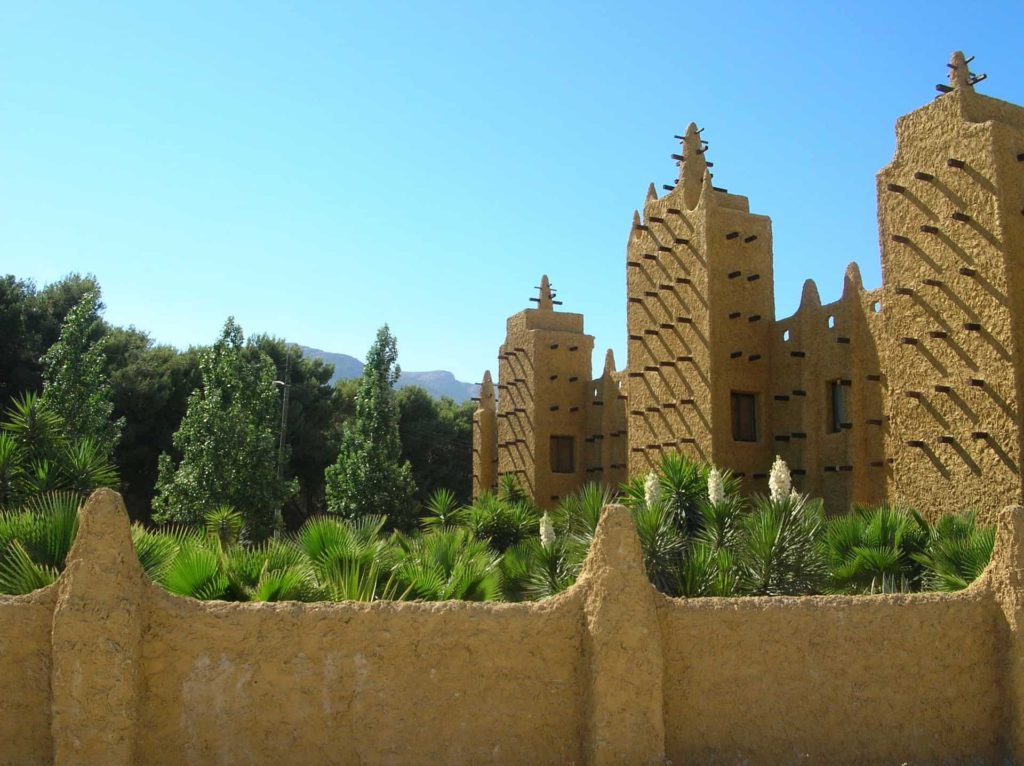Torremolinos is located 7km west of Málaga airport and was the first Costa del Sol resort to be developed back in the early sixties when it was little more than a sleepy village, still today the town reflects its heritage with several of the original fresh fish bars located right in the shopping center, incongruously flanked by exclusive boutiques and gift shops. In general, however, the wave of tourists who descended on the town in the fifties and sixties changed the face of Torremolinos for ever.
Over the years, Torremolinos has evolved as an attractive and appealing resort, noted for its clean sandy beaches, wide choice of hotels and restaurants and unparalleled variety of entertainment, activities and nightlife available. At the height of summer, the resort has a great appeal for the younger set, with a reputation for its hectic nightlife. Out of season, however, it takes on a different character. Now practically a suburb of Malaga, the atmosphere is much more Spanish, especially at weekends, with an air of friendliness and welcome.
Packed with tantalizing shops, thronging with people of every nationality and located right at the heart of the town is the pedestrian only Calle San Miguel, the main artery of the town. This smartly paved pedestrianized street is lined with boutiques and shops with a great variety of goods on offer, attracting a constant flow of people. The Cuesta del Tajo, at the end of San Miguel, leads down a steep flight of steps through the old fishing district of El Bajondillo. This is a popular, picturesque area lined with restaurants and market-style kiosks, selling souvenirs. Down at the bottom is the beach of El Bajondillo.
The beach area shows another side of Torremolinos. With massive hotels, apartment blocks, bars and restaurants, this area is packed during the summer. To the left, the Playa de Bajondillo gives way to the beaches of Playamar and Los Alamos. To the right, beyond the Castillo de Santa Clara, lie the beach areas of La Carihuela and Montemar.
The seafront promenade, Paseo Maritimo, extends east to Playamar and west to La Carihuela, continuing as far as Benalmádena Marina and beyond. The walk to La Carihuela offers pleasant sea views and some dramatic rock formations, before entering the old fishing village of La Carihuela which is a delightful area of picturesque simple houses and bougainvillea clad patios where old men play dominoes and drink anis. Many of the original cottages still exist and not all have been turned into bars or shops. Some have stood still in time. Wander around the area early one morning before the tourists wake up and see a different world. This is the area also known for its excellent seafood restaurants and chiringuitos (beach bars).
The area of El Calvario is less known to the average tourist. Located to the north of the main road which cuts through Torremolinos, it offers a quieter area of small streets of bars, with an appeal to those who prefer to be away from the bustle of the center.
While some may feel that Torremolinos has an abundance of concrete highrises, this is offset by the recent emergence of numerous public gardens. More than one thousand species of trees have been planted in the town, ranging from the exotic magnolia and banana tree to vibrantly colorful beds of roses and azaleas. On the outskirts of town, there are three forests with freshwater springs and barbecue facilities and highly recommended for those seeking a little reprieve from the bucket and spade scenario on the coast. At the same time, if it’s family fun you want, Torremolinos is hard to beat with seasonal seasports including windsurfing, paragliding, water skiing and pedal boats.
If this sounds all just too energetic however, then of course there is the sunlounger alternative or plenty of places where you can while away the hours sitting in picturesque surroundings, sipping a glass of sangria and simply watching the world go by.
Cenachero
The cenachero, was an ancient profession that in its cenacho or espuerta de esparto carries the fresh fish that proclaims through the streets, making their espuertas dance. The cenachero is commonly associated with the Costa del Sol for being a traditional trade, currently totally disappeared.
In 2011, the city of Mobile in Alabama built a replica of the Cenachero statue, located in Plaza de la Marina.
Anchovy
Every year, in the Rincón de la Victoria, the Day of the Victorian Anchovy is celebrated. The anchovy, in addition to being itself a symbol of the Costa del Sol, due to how common its fisheries are.
Iberinbound, iberinbound@iberinbound.com incoming travel agency in Torremlinos, Costa del Sol, specialized in Group tours if they are Educational, Students, Leisure , ad-hoc groups, Shorex, MICE. Relaxing on the beach is not everybody´s favourite holiday activity, as some rather prefer spending their time with sportive activities such as surfing, skiing, climbing, or biking. We can offer a wide portfolio of active tourism, no matter if in the city or out in the nature. Spain and is full of possibilities and we can create a perfect combination of adventure, nature and culture.
We are at your service to organise a tailor-made holiday for all ages, genders and preferences.

